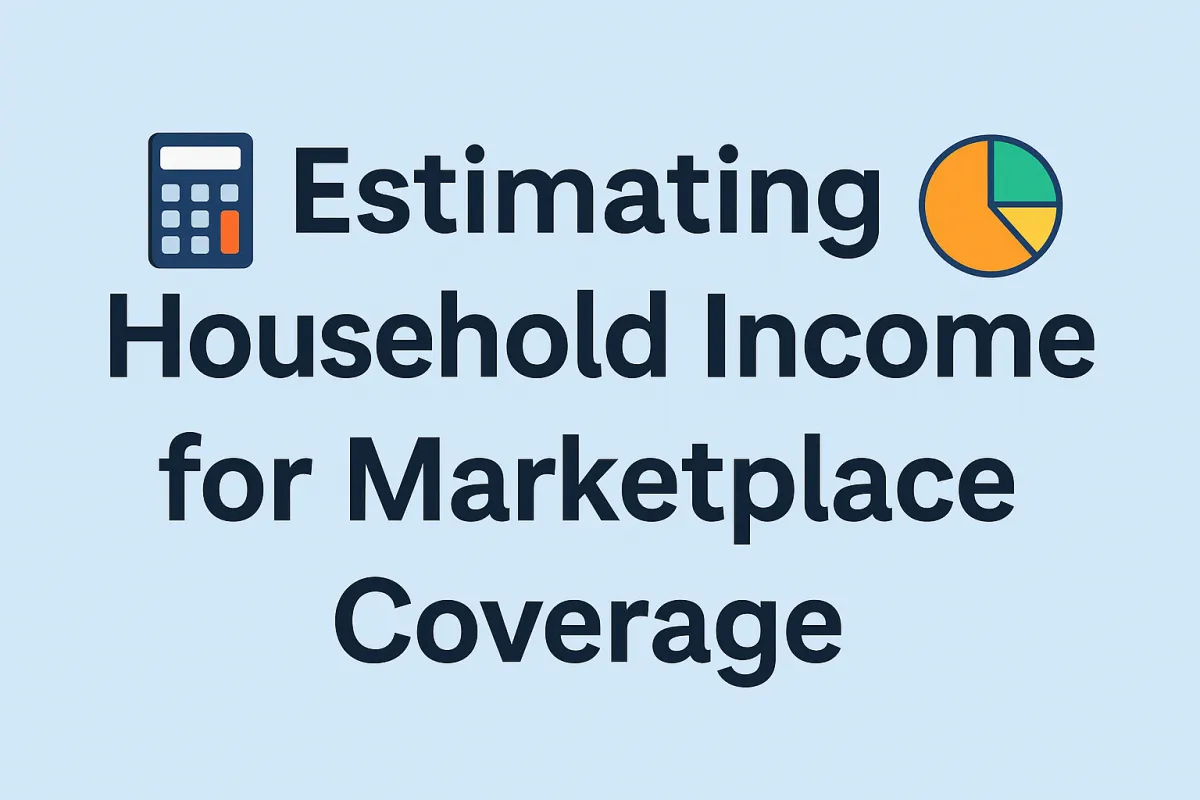
How to Estimate Income for ACA Coverage Without Overcomplicating It
How to Estimate Household Income for ACA Coverage (Without Overthinking It)
Estimating your household income for ACA coverage can feel like a math test crossed with a crystal ball reading. But don’t worry—it doesn’t have to be stressful. The key word here is “estimate.” You’re not expected to predict the future perfectly. You’re just giving your best guess based on what you know right now.
Let’s break down how to do it the right way—and what happens if things change.
First: What Counts as Household Income?

For ACA purposes, you’re estimating your Modified Adjusted Gross Income (MAGI) for the year you’ll have coverage. That includes:
Wages or salary
Self-employment income
Unemployment income
Social Security (for most people)
Alimony (for divorces finalized before 2019)
Rental income
Investment income
Now here’s the tricky part: you’re estimating income for the full calendar year, even if your income situation is changing.
It’s Just an Estimate (And That’s Okay)

A huge misconception among clients is that they have to prove their income right now. But the ACA subsidy system is based on what you expect to earn this year—not necessarily what you're earning today.
So if someone is unemployed in January but expects to get a job in March and work the rest of the year, you include that expected income in the estimate.
If someone is working part-time now but expects to go full-time later in the year? You include that too.
The bottom line: your estimate should reflect your reasonable expectation for the year, even if your current income is lower.
What Happens If You Make Less Than Estimated?
Here’s the good news—if you end up making less than what you estimated, you don’t owe anything back. The system is designed to err on the side of helping people, not punishing them for earning too little.
You might even be eligible for additional tax credits when you file your taxes.
What Happens If You Make More Than Estimated?
This is when things get real. If your final income ends up being higher than what you estimated, you may have to pay back part (or all) of the subsidy you received—but there are important limits in place.
The IRS sets repayment caps based on your income bracket and filing status. For example:
If you're under 200% of the Federal Poverty Level, your repayment cap might be a few hundred dollars.
If you're over 400%, you might owe the full subsidy amount back.
These caps are meant to soften the blow, especially for lower-income families who simply underestimated their earnings.
Other Situations That Can Trigger Payback

Income isn’t the only thing that can cause repayment. You could owe back subsidies if:
You or a household member were offered employer coverage and didn’t report it.
You had access to a spouse’s employer plan but chose not to enroll.
You enrolled in an ACA plan while also being eligible for Medicare or Medicaid.
You filed your taxes separately when you claimed you’d file jointly.
These situations can make you ineligible for subsidies altogether—even if your income is within limits.
Pro Tips for Agents and Clients:

Sometimes, a client may benefit from slightly underestimating their income, especially if it moves them into a lower bracket that qualifies them for Cost-Sharing Reductions (CSRs) or a plan with a much lower deductible. This can be particularly helpful for clients who expect to use their insurance frequently throughout the year.
That said, clients must be made aware that if their actual income ends up higher than reported, they may owe some of the subsidy back when they file taxes. As an agent, you need to be very careful in how you present this information—you can’t explicitly tell someone to fudge numbers, but you can help them understand the implications of their estimates and guide them toward making informed decisions based on reasonable expectations.
Be realistic, and when in doubt, it's better to slightly overestimate income than to underestimate it and risk a surprise repayment.
Update income throughout the year. If something major changes (job, hours, side income), report it to the Marketplace.
Use prior year taxes as a reference point, but adjust based on what’s likely to change.
Document everything. Especially if you’re self-employed or have variable income.
Final Thoughts
Estimating household income isn’t about being perfect—it’s about being thoughtful and realistic. And as long as your client is honest and makes updates when things change, they’ll likely be fine.
The system was built to help people, not trap them.
While PolicySync can't track income trends directly (since HealthSherpa no longer includes income data in their exports), it still helps agents stay organized and monitor key policy changes, cancellations, expirations, and client status to flag potential issues before they become big problems.
Learn more at www.policy-sync.com.